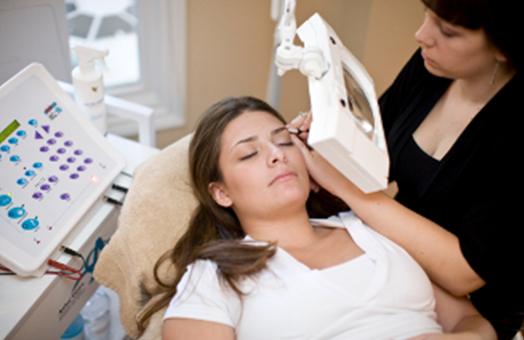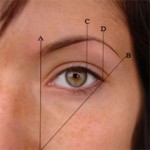
Eyebrow Transplant
 An eyebrow hair transplant often has astonishing positive effects on the appearance and charisma of a person. It is bewildering that only a few grafts can lead to a markedly improvement. Guideline of every eyebrow- hair transplant must be naturalness. We do not want attract attention, because our new eyebrows look artificial, of course. Instead we want attract attention because our new eyebrows radiate natural beauty. It is not easy at all, to create a natural look at a so limited place like the eyebrows. Many years of experience and an eye for minute details are necessary to master an eyebrow hair transplant.
An eyebrow hair transplant often has astonishing positive effects on the appearance and charisma of a person. It is bewildering that only a few grafts can lead to a markedly improvement. Guideline of every eyebrow- hair transplant must be naturalness. We do not want attract attention, because our new eyebrows look artificial, of course. Instead we want attract attention because our new eyebrows radiate natural beauty. It is not easy at all, to create a natural look at a so limited place like the eyebrows. Many years of experience and an eye for minute details are necessary to master an eyebrow hair transplant.
About 4 million people each year face the reality that their eyebrow hair is thinning. As a result they have bald spots in their brows. For many women, drawing on their eyebrows becomes a burdensome morning ritual. Hair loss is a confidence killer regardless if it’s your receding hairline or your disappearing or non-existent eyebrows.
When eyebrow hair loss is that beauty flaw, eyebrow hair transplants are the most natural, low maintenance solution available to both women and men. It may come as a surprise, but anyone can have “bald spots” in their eyebrows.
Common Cause Of Eyebrow Hair Loss

- over-plucking in women
- ageing
- traumatic loss of eyebrow
- burns
- radiation and chemotherapy.
- Genetic thin eyebrow.
- Alopecia Areata
- Thyroid disorders.
- Soften the flat and stark appearance of tattooed eyebrows,
The Eyebrow Hair Restoration Procrdure
 Because of their central position on the face, eyebrows are a defining attribute for balanced facial symmetry. Eyebrows frame your eyes and accentuate their natural beauty, so the primary goal is to design and sculpt an eyebrow shape that adds, dimension, glamour and drama to your face by creating the optimum symmetry and proportion to all your facial features, giving the allusion of perfection. Well-proportioned eyebrows give more depth to your expression, brighten your eyes and lift your face giving it a more vital appearance. They make a significant difference in the presentation of your entire face.
Because of their central position on the face, eyebrows are a defining attribute for balanced facial symmetry. Eyebrows frame your eyes and accentuate their natural beauty, so the primary goal is to design and sculpt an eyebrow shape that adds, dimension, glamour and drama to your face by creating the optimum symmetry and proportion to all your facial features, giving the allusion of perfection. Well-proportioned eyebrows give more depth to your expression, brighten your eyes and lift your face giving it a more vital appearance. They make a significant difference in the presentation of your entire face.
Surgical precision and skill is needed to recreate the appropriate acute angle that hair exits skin as well as the directional changes that take place in the eyebrow. The hair begins pointing upward at its medial aspect where the eyebrow begins near the nose. Then the hairs angle down from the top and up from the bottom, as they converge near the midline, moving laterally across the face over the eye. (SEE DIAGRAM ABOVE)
Artistry and a keen appreciation for beauty and balance are critical in creating the appropriate dimensions, shape and arch of the eyebrows. This is based on one’s gender and individual facial proportion to craft an allusion of aesthetic symmetry. Typically, women’s eyebrows are naturally more arched whereas a man’s eyebrows are more flattened and T-shaped. This is factored into every eyebrow hair transplant.
Each eyebrow will typically require around 500 follicles to produce a natural appearance depending on the existing hair and the density required. The placement of the hairs needs to follow the angle and direction of naturally occurring eyebrow hair and they need to be very closely spaced at a very flat angle to the skin. This is a very delicate procedure and requires specialist eyebrow transplant skills to obtain the correct placement of hairs.
The angle and direction of hair insertion is determined by using needles to produce the very smallest incisions, to minimise any scarring or damage to existing hairs. The donor hairs are taken from the back of the scalp by fue technique. The whole procedure is carried out under local anaesthetic and may produce some swelling and bruising afterwards. However, the procedure is essentially painless, as is the recovery period.
The new hairs inserted will, initially, fall out after around two weeks but will re-grow some 3-4 months later and will continue to grow throughout the patient’s life. They need to be trimmed monthly to keep them perfectly manicured
The safety of eyebrow hair transplants
An eyebrow hair transplant is a small Fue hair transplant procedure. Therefore side effects are limited. The injection of the anesthetics is rather painful because the region around the eyes is very sensitive. After the anesthesia however you do not feel anything
After your eyebrow hair transplant
The small crusts at the donor region as well as at the transplanted eyebrows will vanish of itself within a few days. Do not try to scratch them away. If you do not want to be asked about these crusts, take a free week.
The first 5 days after your eyebrow hair transplant take your showers carefully. You must avoid rubbing down your eyebrows with a towel the first 20 days.
Eyebrow hair transplant compared to cosmetic methods
Using cosmetics eyebrows can be pencilled so that they look stronger, longer or broader. To pencil the eyebrows is widely accepted – as long as you are a woman. For men, however this is problematic.
Furthermore, it is disadvantageous that on every occasion you must pencil your eyebrows anew. And it is still only cosmetic. Having a detailed look your visavis will register fast that your beautiful eyebrows are not natural but pencilled.
The solving of these problems is a well done eyebrow hair transplant. Especially for men. If masterly done, the result is absolutely natural looking. The people in your surroundings will think these are your natural (and beautiful) eyebrows.
Result
 As for every hair transplant also after an eyebrow hair transplant the transplanted hairs will fall out in the next 5 weeks because of the transplantation stress. This is only temporary. After 3 to 4 months the hairs will regrow. After approx. 6 months the full result will appear. Transplanted eyebrow hairs do grow at the rate of the donor scalp hair but over time can begin to slow down in speed, especially after the first year or two to the natural rate of eyebrow hairs owing to the influence of the skin in the eyebrow region to the overall growth of these transplanted hairs (a condition known as recipient dominance).
As for every hair transplant also after an eyebrow hair transplant the transplanted hairs will fall out in the next 5 weeks because of the transplantation stress. This is only temporary. After 3 to 4 months the hairs will regrow. After approx. 6 months the full result will appear. Transplanted eyebrow hairs do grow at the rate of the donor scalp hair but over time can begin to slow down in speed, especially after the first year or two to the natural rate of eyebrow hairs owing to the influence of the skin in the eyebrow region to the overall growth of these transplanted hairs (a condition known as recipient dominance).
Cost of Eyebrow Hair Transplant
Call +91 9222122122 or email us to schedule your eyebrow hair restoration consultation. The details of your eyebrow hair transplant (both the limitations and the benefits in your particular situation), and eyebrow hair transplant cost will be explained to you during your eyebrow hair replacement consultation with Dr. Prashant Yadav.






